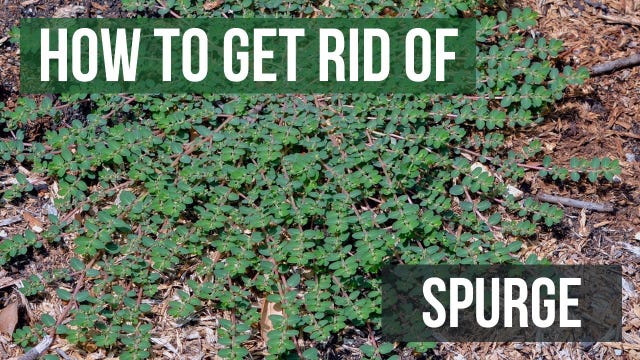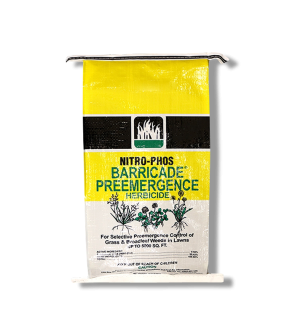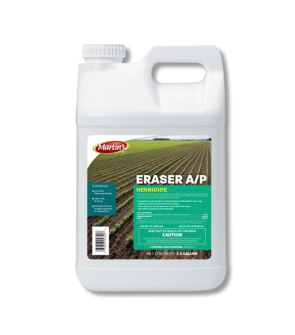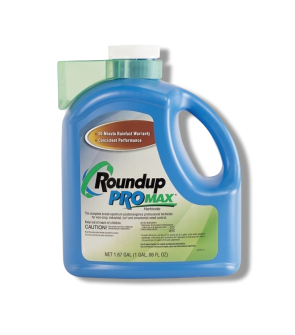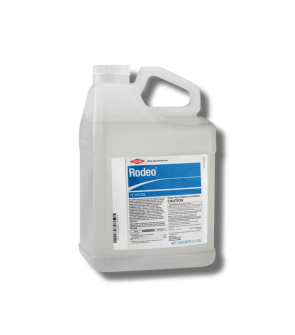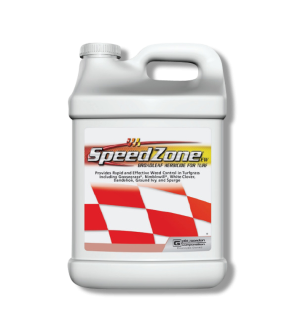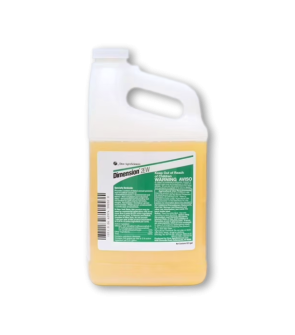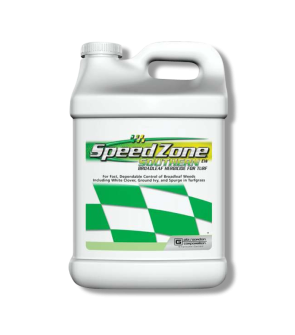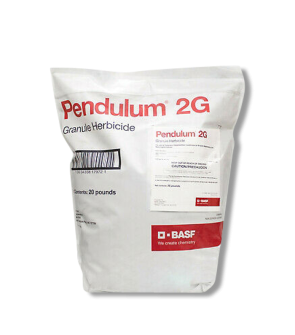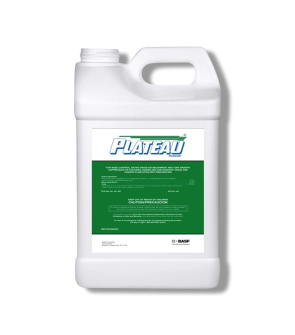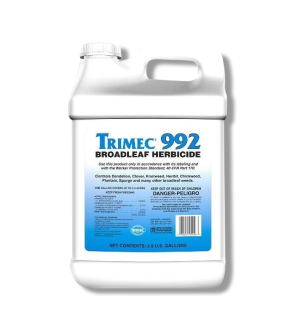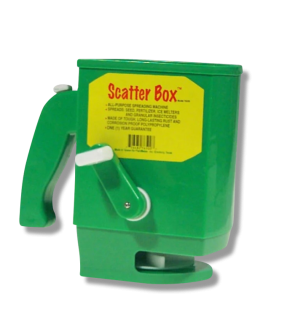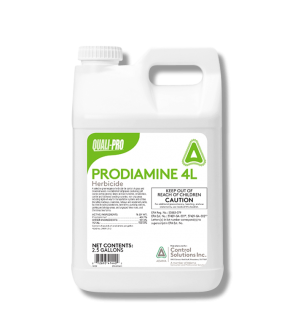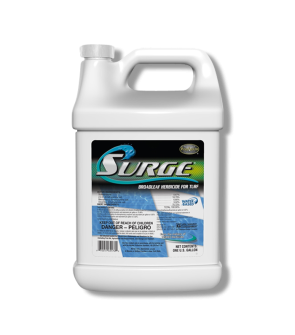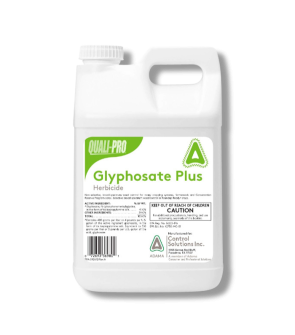Gain access to personalized product screening, the best pricing, rewards, and more!
Most Effective Products
Spurge Control: How To Get Rid of Spurge
This page is a general spurge control guide. The suggested products and methods can control spurge in your lawn or turf areas. Follow this guide and use the recommended products, and you will have 100% control over the spurge in your yard.
Spurge, commonly spotted spurge or prostrate spurge, is a summer annual weed that grows rapidly in thin or patchy areas of lawns, essentially taking over in those bare spots. Like most other weeds, spurge sets up shop on lawns that are not getting enough tender love and care, seizing the opportunity to take over an unhealthy lawn.
Spurge is an incredibly invasive weed -- a single spurge flower can produce hundreds of seeds throughout one growing season. Spurge is also known to be toxic to some grazing animals and pets as the interior of the weed has a milky, sappy substance. This liquid will also cause itching and skin irritation in humans when contact is made.
If you're having trouble with spurge on your lawn, our DIY treatment guide can help. Our lawn care experts recommended the directions below and will show you how to remove spurge from your property properly.
Identification
The first thing you should do with any pest control plan is identify what you are dealing with -- especially regarding weed control. If you misidentify the weed, it can lead to the wrong treatment methods, costing you time and money.
There are multiple spurge weeds, the most common being spotted spurge (also known as prostrate spurge) and creeping spurge. Other common types are petty spurge and nodding spurge. No matter the type, spurge shares these most common identifying traits.

- Low-growing spurge typically grows in a circular shape, or in a clump, growing up to 2 or 3 feet in diameter. Tall-growing spurge, like leafy spurge, can grow 2 to 4 feet tall.
- Spurges are herbaceous plants, meaning the stems and other parts from which the leaves and flowers grow are soft, fleshy, and flexible, unlike woody plants like trees or bushes.
- A single spurge plant grows from a taproot and produces multiple stems. Leaves grow along the length of a stem and in pairs, one opposite the other. Flowers grow at the end of stems, and depending on the species, they can vary in color. These flowers produce hundreds of seeds.
- When either a stem or leaf is damaged or broken, it will ooze a milky, liquid substance from the site of the wound that will cause itching and skin irritation in humans. If you are on land used for grazing, you will especially want to look out for spurge because the plant is toxic for cows and horses. Be sure to use caution if you decide to handle the plant physically.
Use the description and image above to help you properly identify spurge on your lawn. If you are not certain, contact us and send us a photo of your weed. We will identify it for you and suggest treatment options.
Inspection
Once you have confirmed that you are dealing with spurge weed on your property, you can move on to inspection. During this phase, you will need to locate the areas on your lawn where the spurge weed is growing and what conditions in the yard are helping the spurge thrive.

When to Inspect
When conducting an inspection, it is important to know that spurge grows when the temperatures are higher since it is a summer weed.
Depending on where you live and the general climate, you could see spurge growing from February through September. Seeds germinate once soil temperatures heat up, typically above 60 degrees in the spring.
What to Look For
They can be easy to point out if you have spurge growing on your lawn because of their characteristic leaves and stems. Depending on the species of spurge, the invasive weed can grow in different conditions. But for the most part, spurge will grow in areas that are warmer and receive plenty of sun.
Because spurge needs sunlight, it does not do well when competing against other plants, like shrubs or tall turf. So, spurges will grow in areas where the grass is thin, the soil is compacted, or the turf is experiencing stress.
Treatment
Spurge can be a tough weed to manually control because of its extensive root system and ability to produce seed quickly and spread. Therefore, the best way to control spurge is chemical control.
Like any weed, the best way to control it is to prevent it from growing. Do this before the start of the growing season with a pre-emergent herbicide like Barricade. If you have missed the window for your pre-emergent herbicide application, you can control spurge with a post-emergent herbicide, like Fahrenheit Herbicide.
Remember to always wear the proper safety equipment when mixing and handling herbicides. Wear long pants and a long-sleeve shirt, along with gloves and goggles.
Step 1: Measure Your Treatment Area

Whether you are applying a pre- or post-emergent herbicide, you must determine the size of your treatment area so you know how much product to apply.
To do this, measure the treatment areas' length and width in feet, then multiply them together (length X width = square footage).
For example, if you were going to apply Barricade at a labeled rate of 4 pounds per 1,000 square feet and you measured your yard to be 1,725 square feet, then you would need to use 6.9 pounds of Barricade (4 x 1.725 = 6.9).
Step 2: Apply Barricade Pre-emergent Herbicide
A pre-emergent like Barricade is a great option for spurge control. After application, the Barricade forms a chemical barrier that stops weeds from sprouting. Because Barricade is granular, you will need a broadcast spreader to apply it.
Spurge seeds typically germinate once soil temperatures reach 75 degrees Fahrenheit, but germination can occur in temperatures as low as 60 degrees and as high as 100 degrees. Normally, the best time to apply Barricade is when soil temperatures reach 55 degrees.
For spurge control, you must apply 1.5 to 4 pounds of Barricade, depending on your turf type. Based on your calculations, pour the proper amount of Barricade in your spreader. Apply it like fertilizer, broadcasting the granules in parallel lines once across the area. Then, broadcast the other half perpendicularly to cover the entire area.
Once the product is fully applied, water the granules in. Most effective control can be achieved with at least half an inch of water within 14 days of application.
Step 3: Apply Fahrenheit Post-emergent Herbicide
If you have missed your application window for Barricade or you are starting to see spurge growing on your property, use the selective, post-emergent herbicide Fahrenheit.
Fahrenheit offers great control over spurge and other hard-to-kill weeds. It is also a selective herbicide, meaning you can safely apply it to turf areas. Remember that this product is only labeled for use in warm-season grasses like St. Augustine, Bermuda, Centipede, and Zoysiagrass.
Fahrenheit is formulated as a water-dispersible granule, so it must be mixed with water before being applied. Every bottle of Fahrenheit comes with a handy measuring cup to make measuring the tiny granules simple.
Apply Fahrenheit at a rate ranging from 3 to 12 ounces of product per acre. This translates to 0.069 to 0.28 ounces per 1,000 square feet.
We recommend spot-spraying weeds with a handheld pump sprayer to simplify mixing and application.
To mix, fill your sprayer halfway with water, add your measured amount of product, and then add the remaining half to fill the sprayer. Close the sprayer and shake to agitate and ensure an even mix.
Lightly spray your solution where spurge is established. Use a fine spray with a fan nozzle setting to get an even coating on the plant's leaves. Spray on a calm day when wind speeds are low to minimize drift and keep all people and pets off the treated areas until dry.
You should start to see Fahrenheit take effect within 1 to 2 weeks after application.
Prevention
Proper lawn maintenance is the best way to prevent spurge from growing in your lawn. Here are some things you can do to keep your lawn healthy.
Make sure you are mowing your lawn to the proper height. Adjust your mower so that your grass blades are 3 to 4 inches tall. Tall grass encourages deeper root growth and prevents weeds from receiving much-needed sunlight.
Rake and dethatch your lawn to improve aeration and encourage proper water retention. Trim back any overhanging tree branches to reduce shade and increase evaporation rates.
Water your lawn properly. Your lawn will need 1 to 1.5 inches of water every week, including with rainfall. Watering your lawn once a week in the morning is better than a little daily because deep watering encourages deep root growth, strengthening the turf.
Finally, apply semi-annual applications of Barricade Pre-emergent to prevent weed seeds from germinating in the soil.
Key Takeaways
What is Spurge Weed?
- Spurge is a fast-growing annual summer weed that grows low to the ground and spreads quickly on lawns where they are established.
How to Get Rid of Spurge
- Our top spurge weed killer for lawn spurge that has already emerged on your lawn is Fahrenheit Herbicide.
- For spurge that has not yet germinated, use Barricade Pre-emergent Herbicide.
Preventing Spurge Weed Reestablishment
- You can prevent spurge with proper lawn maintenance and semi-annual applications of barricades.
-
Q:You covered Farenheit for warm season grasses for treatment of post spurge growth. I live in Nebraska where we have cool season grasses like blugrass rye and thin fescue. What product do you recommend to control spurge?8/20/25
-
Q:Can Fahrenheit herbacide be used on fescue grass to get rid of prostrate spurge weeds?11/6/24






